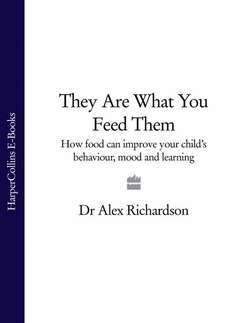Читать книгу They Are What You Feed Them: How Food Can Improve Your Child’s Behaviour, Mood and Learning - Dr Richardson Alex - Страница 48
What’s Behind the Labels?
ОглавлениеAs we’ve seen, the ‘diagnosis’ of most developmental difficulties focuses only on a few core features of behaviour and learning—as though these exist in isolation from the rest of the child. In fact, some other features seem common to almost all children with these kinds of labels—and many of them are consistent with known nutritional deficiencies and imbalances. I’ve always pointed this out in my own talks and lectures, and parents and front-line professionals usually recognize the picture (even if many researchers and so-called ‘experts’ prefer to keep focusing on their artificial pigeon-hole labels).
Then, a few years ago at a conference, I met another speaker whose introduction to her talk was almost exactly the same as mine! Her name is Dr Natasha Campbell-McBride, and you’ll hear more about her work in later chapters. When her own child was given the ‘autism’ label and she was told that nothing could be done, she went and studied nutritional medicine, and worked out a diet that got him doing well at a normal school. What Natasha had recognized—and what my own work was uncovering—is that it’s all to do with ‘guts and brains’, and the links between them—in which your child’s immune system plays a major part. But where my talk went on to focus on research into omega-3 fatty acids—which you’ll hear more about in Chapters 8 and 9—Natasha’s talk emphasized the critical importance of gut bacteria (often called ‘gut flora’), which you’ll hear more about in Chapter 5. These are crucial to your child’s digestion, helping him to absorb and manufacture key nutrients. What’s more, along with omega-3 fatty acids, they also play a vital role in programming and supporting his immune system.
